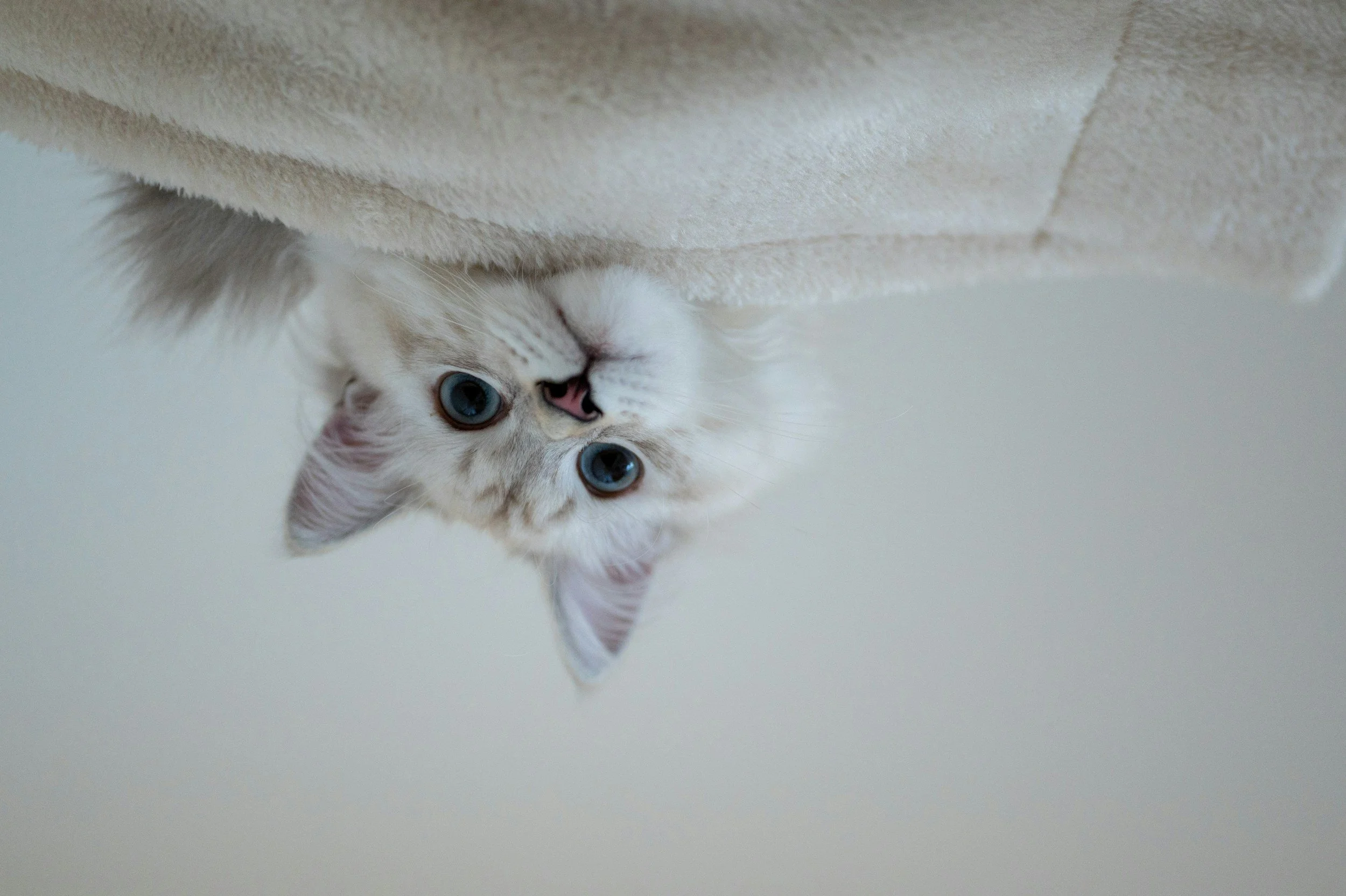When Play Turns Predatory: Understanding Cat Play Aggression🧶
Your cat’s not mean. They’re just unemployed, overstimulated, and hunting your ankles for sport.
What Is Play Aggression?
Your cat isn’t plotting your murder. Probably.
If your ankles have become a favorite chew toy or your cat lurks beside your keyboard like a tiny serial killer waiting for the space bar to twitch, you’re witnessing play aggression in its purest form.
Some cat “attacks” aren’t aggression at all. They’re misfires of the hunting instinct. Cats are hardwired to chase, pounce, and kill. If their environment doesn’t offer real prey or enough mental stimulation, they’ll improvise — with your moving hands, feet, or hoodie strings as the next best target.
The problem isn’t malice. It’s boredom.
When a cat’s prey drive has nowhere to go, it ricochets right into you.
What’s Going On in My Cat’s Head?
Inside that adorable, murder-minded brain? A monologue that goes something like:
“I’m bored.”
“I need attention.”
“Notice me, human!”
Cats don’t realize that their claws and teeth hurt. They’re trying to connect, not injure. When a cat bites during play, it’s their clumsy way of saying I want interaction.
So instead of scolding or punishing, give them what they’re really asking for: engagement, structure, and ways to release all that coiled-up hunter energy.
“Dear Human,
I’m not mad at you. I’m bored, restless, and weirdly obsessed with your feet. If you’d just swing that feather toy around like a wounded bird, I’d stop ambushing your shins.”
Cat Body Language 101
Let’s decode your cat before the next ambush. Their body gives you all the clues you need — you just have to notice.
Whiskers forward, eyes dilated, ears back, tail lashing?
That’s the feline battle stance. You’re one wrist flick away from being hunted. Grab a wand toy immediately and redirect that energy somewhere safe.
Whiskers relaxed, eyes half-closed, tail still, slow blink?
You’ve got a peaceful cat. Return the slow blink — it’s a nonverbal “we’re good.” That’s your moment for gentle contact.
Knowing the difference between “game on” and “we’re chill” is how you stay out of the emergency room and build trust.
Tools for Physical and Mental Health
If your cat is using your body as a jungle gym, it’s time to upgrade their environment.
1. Scratchers
Scratching burns energy, stretches muscles, and relieves stress. Some cats prefer vertical posts, others go horizontal. Test both — every cat has their own preference.
2. Climbing Territory
Vertical space is gold. Cat trees, wall shelves, and window perches give your cat somewhere to move up instead of at you.
3. Interactive Toys
Wand toys, feather teasers, motorized mice, crinkly tunnels — rotate them to keep things fresh. You’re aiming for “prey variety.”
4. Routine Play Sessions
Two 15–20 minute sessions a day can completely change your cat’s energy balance. The secret? Always let them “catch” the toy at the end so the hunt feels complete.
You can’t entertain your cat 24/7. But you can make sure their world gives them a job.
The Big Picture
Play aggression isn’t about dominance or defiance. It’s a survival instinct misdirected at the nearest moving object — you.
When your cat bites, pounces, or tackles you out of nowhere, it’s not rebellion. It’s instinct begging for a better outlet.
So channel it.
Give them chase toys. Vertical territory. A reason to hunt something that isn’t you.
The biting stops. The bond deepens. The predator in your cat gets to be what they were born to be — safely, happily, and without drawing human blood.
“Dear Human, again,
You thought I hated you. I just needed something to chase. You move like prey. That’s not your fault. Play with me before I lose my mind.”
Your cat isn’t attacking you — it’s ambushing ankles for enrichment.
Play aggression is what happens when a predator gets bored. Let’s turn those sneak attacks into confidence-building play that works for both of you.

